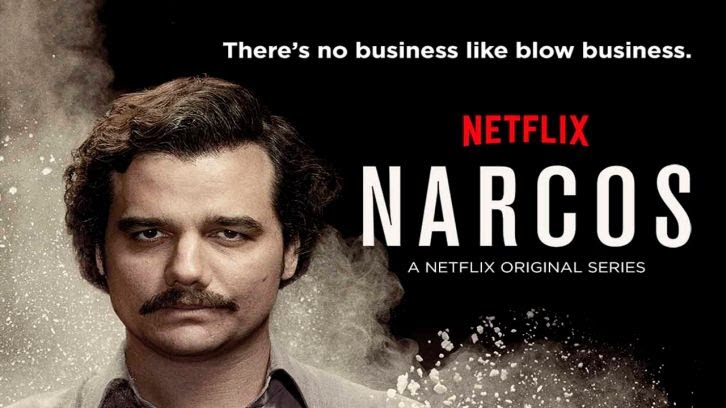Narcos hit screens in 2016. While many fans followed it because of the drama, murders, parties, and complicated storylines, many noticed that Pablo had a lot of cash. He owned so much stuff that he would burn some to keep warm and bury shipping containers full of money. Pablo and the other cartels in the series had to resort to money laundering to make this cash useful.
Money laundering is introduced from the beginning of Narcos Season 1 Episode 2, when Gacha tells Pablo that they must account for their sudden and untold wealth. Pablo quickly replied: “…just money laundering…”. He even mentioned Mafia boss Al Capone and how he successfully laundered the proceeds of crime. Even though Gacha told him that Capone’s quantity was small and theirs was too many, Pablo responded: “…let’s buy a bigger washing machine.”
money laundering
But what is money laundering? Is this a theme explored in depth in Narcos ? Well, as a mockumentary about real people involved in the drug trade, they must be involved in some form of money laundering. If you haven’t seen the series yet, parts of this article will contain spoilers.
Money laundering means disguising or cleaning dirty money (ill-gotten gains) so that it appears to come from a legitimate source. This is often accomplished by opening up legitimate businesses and injecting them with illicit cash.
Medellin method
The first two seasons followed Pablo Escobar and how he established the Medellin drug cartel. Medellin was used to obfuscate the origin of the drugs. Additionally, Pablo worked as a cartel accountant along with his brother Roberto Escobar. He ensured that cartel members remitted their returns and that the cash was laundered efficiently. However, money laundering in Medellín is brutal. Compared to the Cali cartel that gamed the system after Pablo’s death, they relied on brute force, ingenuity and sheer size.
Cash smuggling is the main method used by the Medellín drug cartels to launder money. The cartel often ships large containers filled with such substances to states with lax banking regulations to avoid detection. In “Narcos,” Escobar used Panamanian banks under General Manuel Noriega to deposit millions of dollars, effectively hiding the funds overseas. Pablo’s affairs were primarily managed by Gilberto Rodriguez, who founded and headed the First American Bank in Panama.
Once they had the cash, it was time to start some legitimate business. Escobar’s business of choice was mainly real estate, such as Naples estates, luxury mansions and apartments. Due to low demand, he sometimes offered free housing to the public as an act of charity, showcasing his success as a real estate mogul.
However, such a huge amount of money cannot be devoted to just one business. As a result, they are branching out into business ventures where returns are unpredictable but require large infusions of cash. These businesses include construction companies, taxi services, real-money casinos and cattle ranches. There was no complicated laundromat in the first two seasons. This is because they mainly bury some of the cash, as mentioned earlier, and use the money to bribe corrupt politicians to delay arrests.
The secrets of the Cali drug cartel
Season three saw the emergence of a more organized money laundering operation and the use of state and other legal systems to launder funds. The Cali cartel broke away from the Medellín cartel and learned many important lessons. They avoided the heavy-handed methods used by the Medellín Syndicate and never annoyed the government the way Pablo did. Instead, they work with the legal system to hide all criminal funds.
The Cali Cartel uses shell companies and offshore accounts to conceal the source of its funds. Their funds are moved to countries with high levels of bank secrecy, making it harder to track dirty money. Additionally, they are engaged in cash-intensive businesses such as importing and exporting products. They used to hide their ill-gotten gains under the guise of importing and exporting electronic goods or textiles.
Similar to the Medellín cartel, they also heavily exploited casinos by using drug money to buy chips, gamble briefly and cash out as if the funds were legitimate winnings. Excess funds are also used to purchase large, high-value items such as art, jewelry, and other luxury items. These items can be resold later to recoup cash. The cartel worked with corrupt bankers, government officials and law enforcement agencies who kept the cartel’s affairs hidden.
In addition, they hired professionals to study the DEA’s measures. and reliance on technology as a tool for their business. They can hire top engineers to design communications equipment that cannot be eavesdropped.
Impact on gaming
Casinos are easily exploited by cartels because they have financial ecosystems ideal for money laundering. “Narcos” paints a picture of the cartel’s abuse of the gambling industry, albeit in a less prominent way, with minimal gambling, casino ownership, and other shady tactics that gave the industry a bad reputation. Additionally, casinos can be used as meeting places for drug lords to facilitate deals and even intimidate rivals. Embedding crimes like cancer into the gaming industry transforms casinos from glamorous entertainment venues into enablers of criminal activity.

